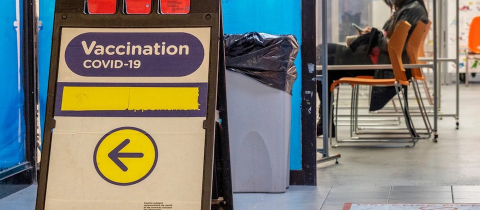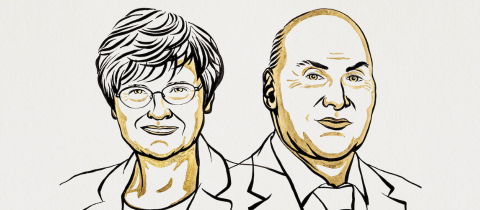The measures taken by Sweden to curb the COVID-19 pandemic have polarized the media. Sweden, it seems, is like the elephant being examined by the blind men. There is so much to appraise that we can all come away with different conclusions on how it has handled the pandemic. And we can choose to which orange we want to compare Sweden’s apple: the rest of Scandinavia, Europe more broadly, or even the province of Quebec. Sweden is an all-you-can-eat smorgasbord that satiates everyone’s taste for how the pandemic should be managed, and the coverage of its approach is often woven with misinformation and decontextualization.
Before I dove into the so-called “Swedish experiment,” I had heard dire warnings. Sweden had no lockdown. The country, I read, was attempting to reach herd immunity the natural way, by getting everyone infected so that whoever survives is now immune to the disease. And now, months after this grand, reckless experiment on the Swedish population, deaths had gone through the roof, proving that the Scandinavian country best known for ABBA and IKEA had failed to assemble a rational response to the virus. Meanwhile, some conservative news outlets were celebrating the success of Sweden, which had preserved personal autonomy while also, allegedly, saving the economy. So whose Sweden is the correct Sweden?
Sweden is not Hell
The claim that Sweden was playing Russian roulette by betting on herd immunity--by essentially letting the virus run its course--was wrong. Sweden has denied time and time again that achieving herd immunity was the primary strategy. Rather, the country had chosen to enact a sort of voluntary lockdown, and while herd immunity was mentioned as a concept and perhaps even hoped for as a side effect of their approach, it was never the stated goal. The very first month of Sweden’s response to the pandemic saw recommendations familiar to us in Quebec: staying home if sick, frequent hand washing, physical distancing, and avoiding travel unless necessary. Sure, cinemas were briefly open, but attendance was so low their main chain had to close on March 17. Some flights were still operating but mostly to transport essential workers and supplies to remote areas of the country.
The second half of the month of March saw a progression of additional measures, such as a banning of public events with more than 50 people and advice to work from home if possible. It’s just that these measures were voluntary for many reasons. Their public health agency, which called the shots and is meant to be separate from the elected government, did not think it was realistic to keep the population under a prolonged lockdown. They were aiming for a tolerable, long-term adaptation. They also believed that a mandatory lockdown that included closing elementary schools would create a problem with essential workers having to take care of their children at home. Besides, Swedish law does not allow for the quarantining of a whole city or region (although it can be enacted for people or small areas).
Sweden was also accused of ignoring the recommendations of the World Health Organization, but as Dr. Rachel Irwin of Sweden’s own Lund University pointed out in an academic paper on the misinformation surrounding Sweden’s pandemic strategy, their recommendations are not laws. They are a grab bag of binding and non-binding policies and guidance documents that must be adapted to a country’s capacity, context, and situation. Sweden did tailor these recommendations to their reality, and whether or not their interpretation was effective is a better question to ask.
So has Sweden’s approach failed at adequately protecting its population? Media outlets were quick to point to the country’s high death rate from COVID--more than 5,500 people in a country of 10 million, the BBC was reporting in July--but the number of daily new deaths has been going down since late April. Sure, the country’s long summer staycation probably helped but the trend is holding true to this day. There are also many ways of looking at deaths. Stockholm county was reported as having 91 deaths per 100,000 people, but further south the county that includes the city of Malmö clocks in at 15 per 100,000.
Sweden is not Heaven
As for Sweden’s economy, it is predicted to contract by 4.5% this year. Spendings fell 25% (comparable to neighbouring Denmark) and unemployment increased from 7.1% in March to 9% in May. The country’s economy is thus hardly unscathed, though it is important to point out that this economic impact is also tied to trade, which is influenced by how other countries juggle the crisis. An encouraging trade-off might be the attainment of herd immunity in Sweden, when it is estimated about 70% of its population would have protective antibodies against the virus, but blood surveys of residents of Malmö in April estimate that only 4% of the city’s population have those antibodies. The number for Stockholm is 17%.
Some fawning media coverage has been describing life in Sweden as perfectly normal, with Swedes going about their business as if the virus was a figment of the imagination. “If COVID were ‘over’ in Sweden,” Dr. Irwin told me via email, “I wouldn’t have cycled 200 kilometres last week to avoid taking the bus.” Sweden, she tells me, has adapted to a new normal. Using hand sanitizer, meeting friends outdoors to reduce the risk: these new realities are hoped to be sustainable for most people.
Even though I may be painting a rosier portrait of Sweden’s approach than the condemning narrative expressed by some media outlets, a fair amount of criticism is warranted. Workers in long-term care homes complained of a lack of personal protective equipment. Over half of the deaths in Sweden due to COVID-19 happened in care homes for the elderly, which their public health authority conceded was due to a failure on their part. By not highlighting that asymptomatic individuals could be contagious, Sweden’s public health agency may also have been responsible for a false sense of reassurance (their website still claims asymptomatic transmission is “a minor part” in overall transmission). Finally, their stance on face masks is also lukewarm: unclear scientific evidence, they say, so they do not recommend them.
Sweden has a history of being portrayed as either a liberal paradise or an out-of-control hellscape depending on who holds the metaphorical brush. The country’s approach to dealing with the pandemic is being adjudicated prematurely. It’s like we’re looking at a tennis ball in mid-air and trying to figure out who will win the match an hour later. A middle-of-the-road approach may be better in the long run than the more severe, somewhat unpredictable clampdowns that punctuate other countries... or it may not. Time will tell if Sweden’s approach was wise so that we can better prepare for the next pandemic that will inevitably strike our modern world.
Take-home message:
- Even though Sweden could not legally enact a lockdown against the coronavirus, it asked its citizens to voluntarily adopt common guidelines in keeping with the World Health Organization’s general recommendations
- The goal of Sweden’s approach was never said to be to achieve herd immunity, and in fact the country is far from having reached this immunity through exposure to the virus according to blood surveys
- The country’s public health agency admitted a failure in adequately protecting care homes for the elderly and its stance on masks, contact tracing and asymptomatic transmission can be criticized
Correction: this article originally stated that it had been reported that Sweden had abandoned contact tracing in early March. This is wrong. Sweden is using contact tracing. The article has been updated to remove the wrong information.







